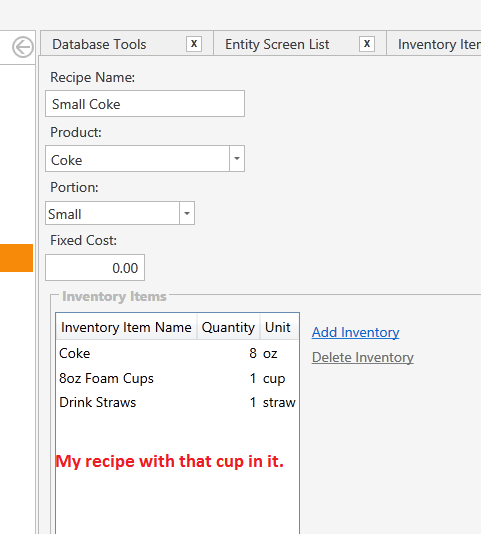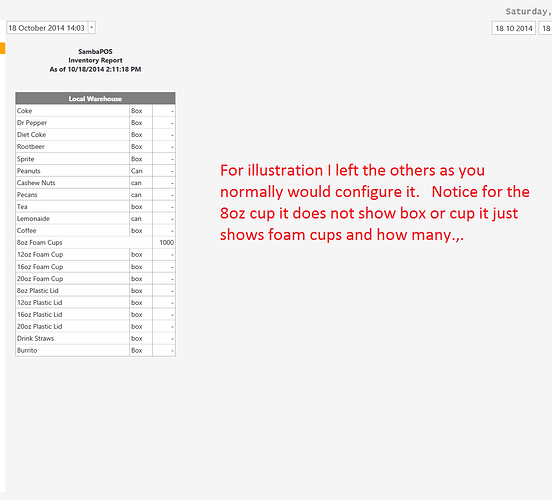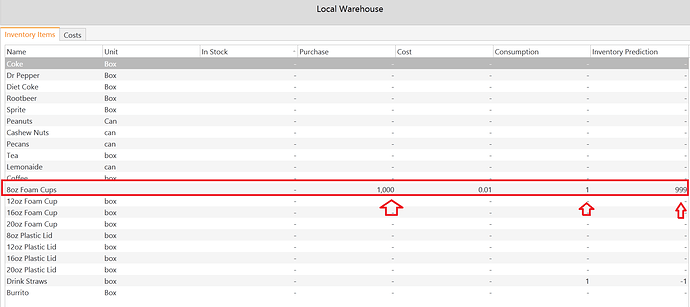When you set a multiplier of more than 1 in the inventory report it will show cases not single bottles. If you want that specific report to show single bottles you have to set multiplier to 1 and purchase it by bottle…
When I say cases it can be whatever your purchase unit is… if its sold 24 to case or 24 to caja or 24 to sack… if you have multiplier set to more than 1 it will show how many caja, sack, or case… whatever you named the transaction unit.
You must set multiplier to 1 and purchase it in single units if you want that specific report to show bottles not cases.
Bottom line is that report shows quantity of Transaction Unit you have not base unit. So multiplier of 24 if you purchase 2 caja or 48 un… it will still show 2 in that report. If you set multiplier to 1 and purchase 24 un it will show 24 in that report.
To sum this all up it comes back to what I have been trying to tell you for months… if you want to track a case of beer by the bottle in the inventory and not by the case then your multiplier should be 1 and you should purchase it by the bottle. It does not matter if you normally buy it by case or not… nothing changes all that changes is how it reports it and how you enter it.
Maybe @emre can give us options in future to toggle how it calculates a specific item when its entered in as an inventory item… either per unit or per transaction unit but for now it only shows transaction units in that specific inventory report.
In some instances setting multiplier of 1 is an advantage expecially if items per transaction unit changes with each purchase…Sometimes a case of cokes is 12 sometimes they run a special and i get 14 per case instead of defining two different inventory products I can just purchase it per bottle and enter total price it will calculate unit price for me.
My personal primary reason I set multipliers to 1 on some of my products is simply because my base unit is my selling unit and I want it tracked per unit not per transaction unit. I think its great that @emre has allowed this.
Here is an example with screenshot:
I track my foam cups per unit each sale of a coke product uses a specific size cup. I can accurately track how many cups i sell because its always exactly 1 cup per soda sold… here is the setup to track my 8oz foam cups.


I can use simple custom report to convert it and show it as cases…
With this method I can see live on the fly stock. The inventory report will be accurate for any item that I sell this way. The inventory prediction will be my actual live inventory as I am selling it per item… the only reason it would not be accurate would be theft or damages.



